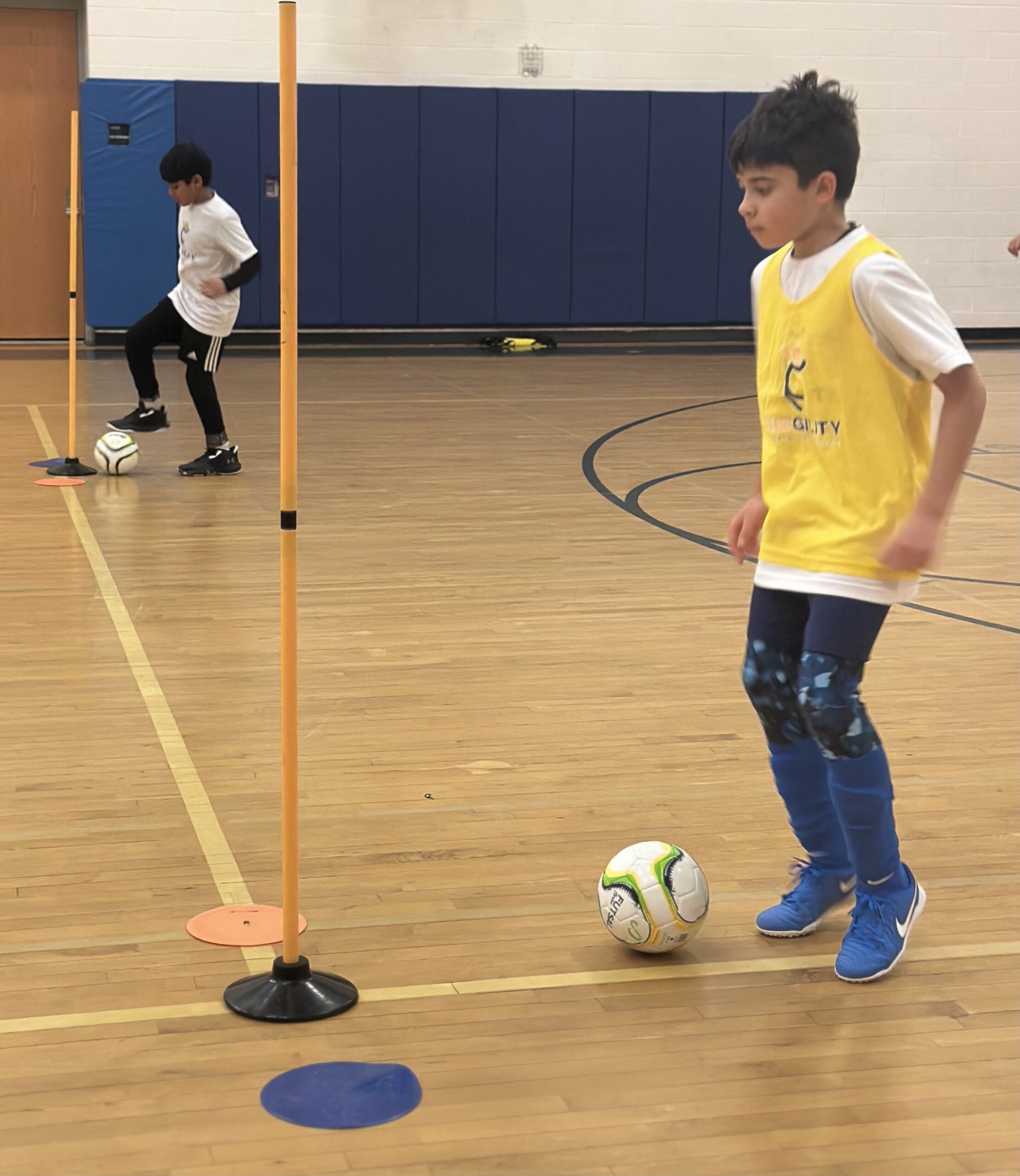
Introduction
In the traditional talent assessment model for soccer, there are four primary dimensions: technical skills, tactical understanding, physical capacity, and psychological characteristics. Youth soccer tends to prioritize technical and tactical development due to a lack of time to work with players. Although skill is crucial, its value is realized only when executed appropriately within the context of a game. Successful in-game actions, such as dribbling, passing, or shooting, require a few steps summarized by what we like to call the “See, Analyze, Decide, Do” model:
- See/look/scan – Players must use their visual, auditory, and tactile senses to perceive the location of teammates, opponents, and the ball. Maintaining focus is essential for gathering the most important information.
- Analyze/evaluate options – Reaction time refers to the ability to quickly analyze, interpret and respond to information.
- Decide/choose an option – The ability to make quick decisions is what distinguishes great players from good players.
- Do/Perform/Execute the action – pass, dribble, shoot, tackle, make a run etc.
Surely executing the action is not the only thing we need to train and at Kidgility we firmly believe that all qualities need to be trained in tandem while recognizing the age and stage of development of the players.
Cognitive Motor Training
The ability to quickly translate information into movement, also known as cognitive motor skills, is crucial for the success of young soccer players. These mental functions, which enable interaction with our surroundings, are not only essential but also trainable, leading to measurable improvement through focused practice.
Here are some key potential benefits of cognitive motor training in youth soccer:
1. Improved Reaction Time
Soccer is a fast-paced sport that requires players to respond quickly to changing situations. Cognitive motor training can help players recognize and react faster to changes in the game.
2. Enhanced Decision-Making
On the field, players must constantly make split-second decisions: “Do I pass, dribble, or shoot?” Training cognitive motor skills can improve players’ ability to analyze situations quickly and choose the best action under pressure.
3. Better Spatial Awareness
Understanding where teammates, opponents, and the ball are located is crucial for success in soccer. Cognitive motor training may help players develop spatial awareness, allowing them to move strategically and position themselves more effectively.
4. Injury Prevention
Cognitive motor skills can enhance coordination and balance. This can help young players avoid missteps or awkward movements that often lead to injuries.
5. Increased Confidence
When players feel more in control of their body and decisions, their confidence grows. Improved cognitive motor skills help kids trust their instincts and stay composed, even in high-pressure situations.
How to Train Cognitive Motor Skills:
- Activities with Multiple Inputs: Combine physical activities with cognitive challenges, such as calling out colors, numbers, or patterns that players must react to.
- Small-Sided Games: These create dynamic, fast-paced scenarios where players must think and act quickly.
- Obstacle Courses: Set up courses that require players to make decisions or react to cues as they move through the activity.
Conclusion
The “See, Analyze, Decide, Do” model suggests that training along all four quadrants of talent assessment is necessary to develop well-rounded youth soccer players. Cognitive motor skill development is crucial for developing players who are aware of their environment, can react quickly, make quick decisions and are skillful. Incorporating this type of training can lead to greater success for young athletes looking to grow in the game.
At Kidgility we partner with the awesome guys at SwitchedOn to incorporate cognitive motor training into our programming. Want to see how our training can transform your young player’s game? Join Kidgility’s training programs today!
